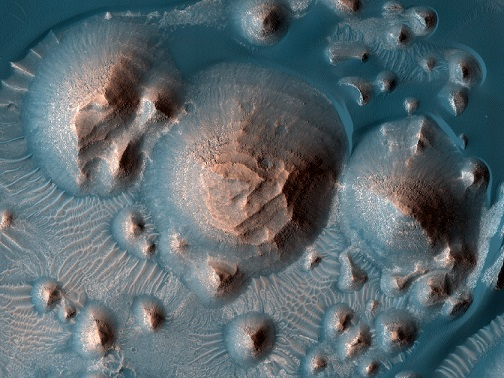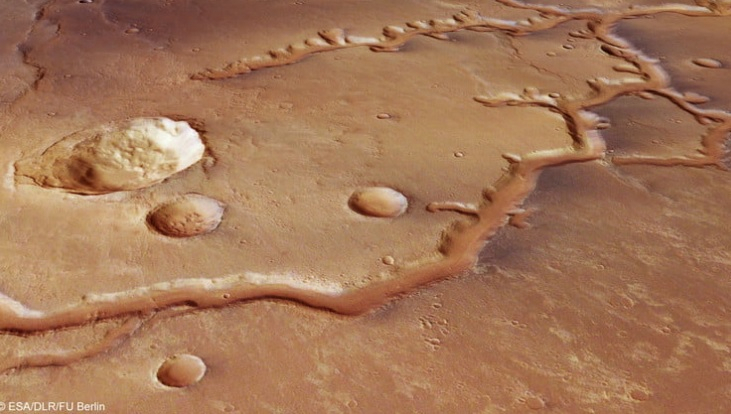NASA has released a new photo showing a region on Mars that has been battered and eroded by the harsh weather conditions of the planet. Due to the appearance of the area, it is widely believed that it is one of the first regions that formed on Mars.
The photo recently shared by NASA was taken by the HiRISE camera of its Mars Reconnaissance Orbiter. It features a stunning image of Arabia Terra, a region on Mars filled with craters, hills and sand dunes.
Battered Region Of Mars

The photo features some of the hills and sand dunes on Arabia Terra. According to NASA, these natural features hold traces of erosion, which were most likely caused by the harsh winds on Mars. Unlike the other regions on the Red Planet, Arabia Terra has more battered natural features, which indicates that it was most likely formed during the early years of the Mars.
"The wonders of time and erosion are on full display in this image of layered hills in Arabia Terra, Mars, as imaged by the HiRISE camera aboard NASA's Mars Reconnaissance Orbiter," the agency said in a statement. "Along with the hills, we see dark dunes that the HiRISE team is monitoring for activity due to the wind."
Volcanism On Arabia Terra
In an attempt to understand the history of Arabia Terra, previous studies were conducted on the region using the data and images provided by NASA. In one of these studies, which was published in the journal Nature, the authors theorized that the region was once home to active supervolcanoes.
As per the study, the craters found on Arabia Terra were actually the calderas that were formed by the violent eruptions of these massive volcanoes. In addition to the craters, the authors believe that violent eruptions may have also contributed to the erosion of the natural features found in Arabia Terra.
Arabia Terra's Flood Plains

In another study, the researchers claimed that during ancient times on Mars, the planet had frequent storms that caused flooding in various areas. According to the researchers, some of these flood streams may have flowed through Arabia Terra, which caused some of the area's features to erode and deteriorate.
"The inverted channels developed on extensive aggrading flood plains," the researchers stated in their study. "As the inverted channels are both sourced in, and traverse across, Arabia Terra, their formation is inconsistent with discrete, localized sources of water, such as meltwater from highland ice sheets. Our results are instead more consistent with an early Mars that supported widespread precipitation and runoff."









